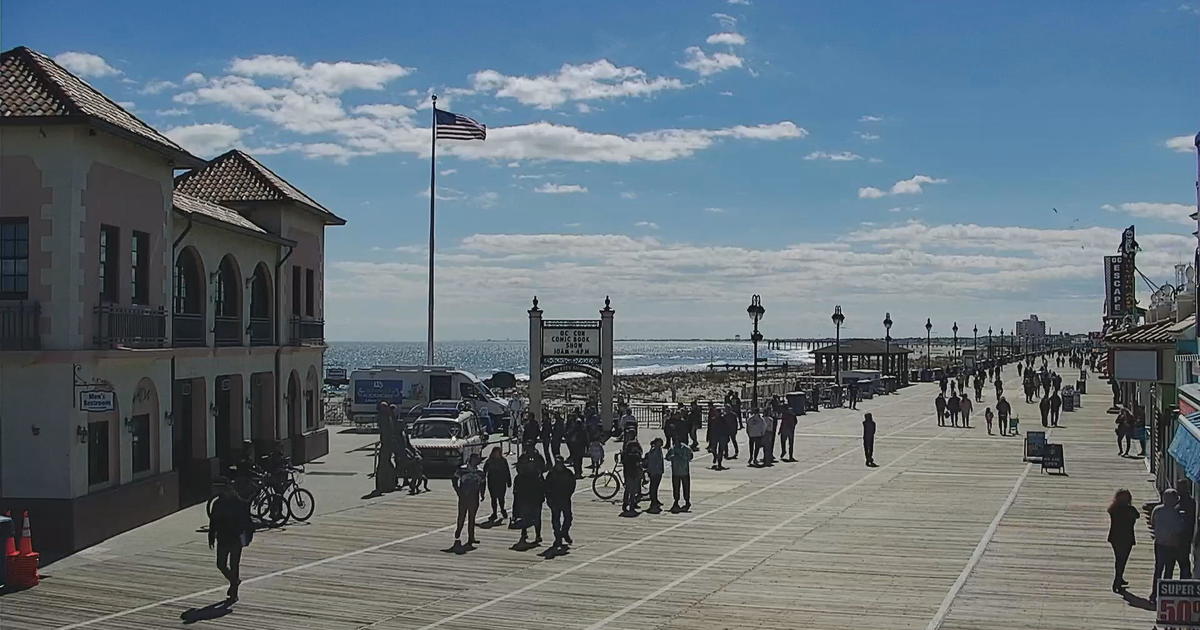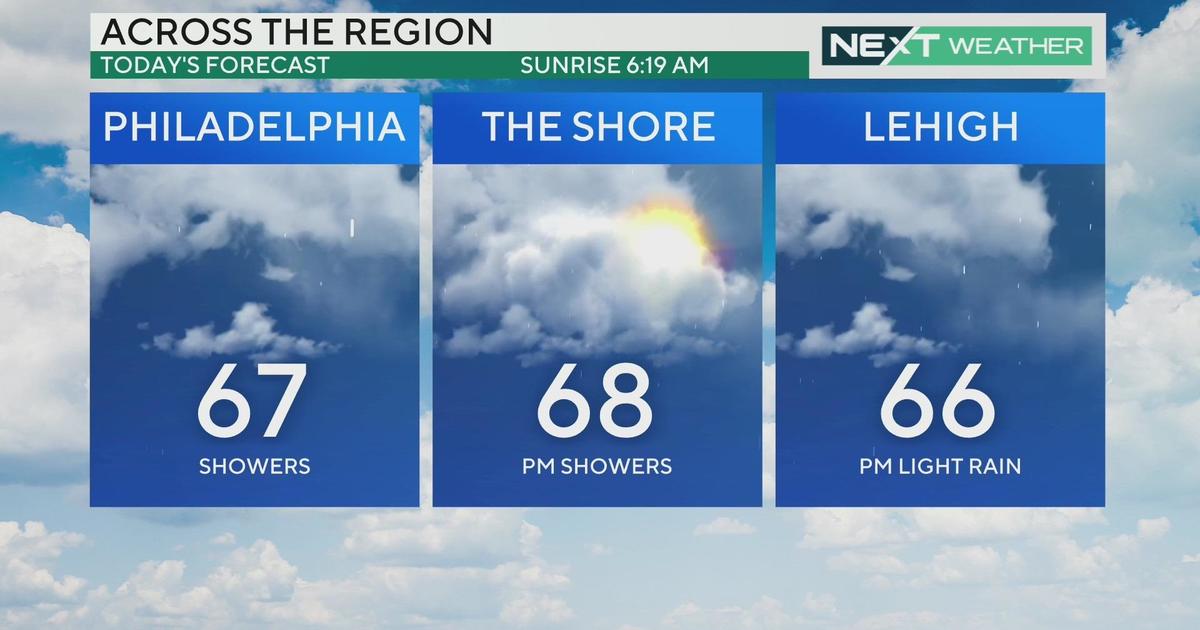Nor'easter Recap And Unprecedented Cold Expected For The Area
PHILADELPHIA (CBS) -- Thursday's Nor'easter has been wrecking havoc along the eastern seaboard for the last four days almost and we got the brunt of the system in South Jersey yesterday. It will not be just the heavy snow though that we saw on Thursday that is the only problem from this massive system, but also extremely cold temperatures and high winds which will be problems into the first half of the weekend.
Let's start off by recapping the actual low itself. It started off the coast of Georgia and Florida on Wednesday and brought with it mixed precipitation and even snow to areas that had not seen snow in years. At that point the storm was in its infancy and, as we know ,it matured and strengthened at an extremely fast rate as it moved up the coast and into the Mid-Atlantic and Northeast states on Wednesday night into Thursday.
Snow started falling in southern Delaware and even southern New Jersey as early as the overnight hours on Wednesday into Thursday morning. The system then continued to strengthen and slowly moved up the Jersey coast before starting its path to the northeast as it made its way toward New England.
It's at this point that we need to start taking a look at the central pressure of the storm. When we talk about the strength of system like this or any low pressure system that moves across the area, the way we determine how powerful it is, is by looking at the central surface pressure in the middle of the system. In general, 1000 millibars is the starting point for pressure in the Mid-Latitudes. This storm ended up with a central pressure of 549mb at its peak strength. To put this in perspective for everyone, Superstorm Sandy had a central pressure of 540mb when it made landfall.
Also, this storm had a central pressure lower than 13 of the 17 named storms that occurred in the Atlantic Basin during hurricane season this past year. This storm was a monster. You likely heard the term "bombogenisis" or "bombing out" or "bomb cyclone." While these terms have have been thrown out recently to the general public they are pretty well known in meteorology circles. For a cyclone to bomb out like this one it needs a pressure drop of 24mb in 24 hours. This particular system at one point doubled that criteria. This was an explosive storm from start to finish and it's not quite finished yet either.
What I mean about the storm not quite being over just yet is that fact that extreme cold and strong winds from the same system are now pummeling the area and keeping us in this cold spell, at least through the weekend. The cold we have seen since the end of December and into the start of the New Year is relatively unprecedented for the region.
We will start by taking a look at strictly the Philly metro. This stretch of cold temperatures for Philly starts all the back on Dec. 26 when we had our first day below freezing temperatures to start this run. We then went the next eight full days without going above 32 degrees. We briefly touched 33 degrees on Jan. 3 for only a few minutes around 3:30 p.m. and quickly dipped back below the freezing mark. Due to that quick uptick in temperatures we have not had a continuous stretch of below freezing but even using 33 vs 32 in my research it makes little difference. Using 33 degrees as the precedent and assuming the forecast will verify through the week that will mean we have 12 days in a row of 33 degrees or lower temperatures. That would make it the eighth-longest streak on record. It also would be the longest such streak since January of 1982.
Bitter Blast Engulfs The Northeast After Heavy Snow Blankets Parts Of The Region
For the surrounding areas it is just as bad. In Atlantic City we are working on potentially 12 days in a row of below freezing temperatures making it the fifth-longest streak on record. In Allentown it will be 13 days in a row below freezing or the fourth-longest streak on record and in Trenton it will be 13 days in a row of below freezing or the fourth-longest streak on record. For both Allentown and Atlantic City we have not seen a streak of cold temperatures like this since February of 1979! That's almost 40 years!
One last tidbit of weather trivia for you to wrap up this post about extreme cold across the region. We head up to the Poconos for this information. The Mount Pocono reporting station has only been in use since 1999, so just about 20 years worth of data to work with, but the cold that is being reported in the Poconos is really out of this world. For the third time in the last 20 years, Mount Pocono reporting station is expecting to report on two consecutive days' DAYTIME HIGH temperatures that will not be above 10 degrees! Highs on Friday and Saturday are forecasted to be 7 and 4 respectively. This would tie the two-day stretch from Feb. 15-16, 2015 where we only had a high of 9 both days and Dec. 14-15, 2004 where we had highs of 7 both days.
Overall, this current weather pattern has left us with some very interesting results and powerful storms. Hopefully everyone has been taking the right measures to stay safe in the extreme cold and heavy snow. I hope you maybe learned a little something about this Thursday's storm and understand that while this cold is extreme, it really is unprecedented for the region.
Have a great weekend everyone and stay warm!



